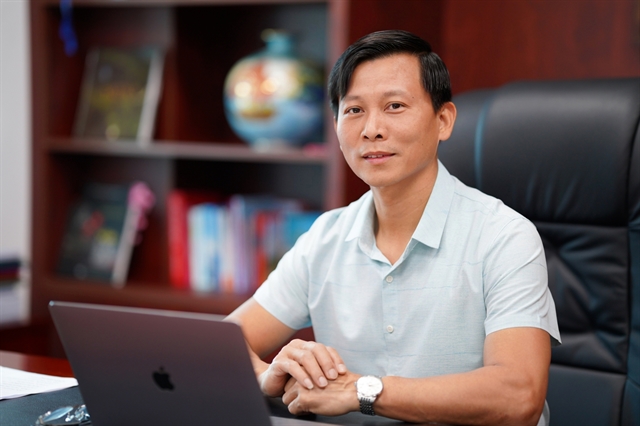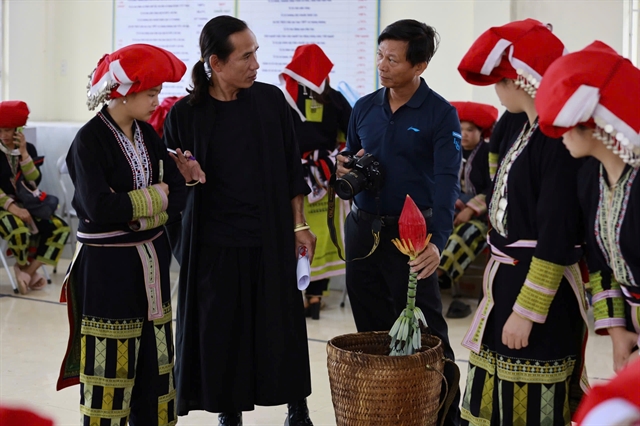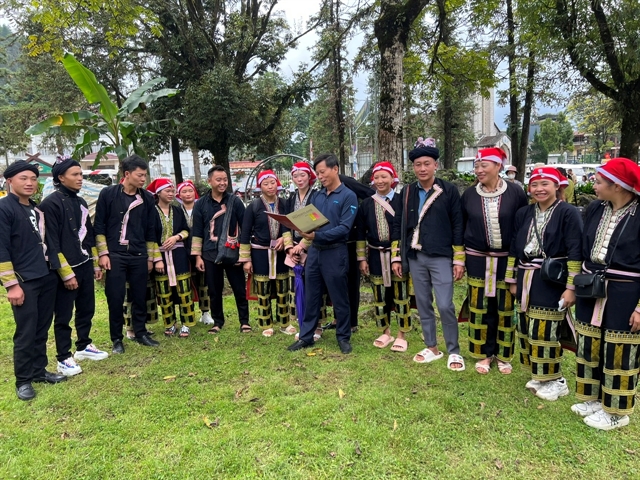 Inner Sanctum
Inner Sanctum

A theatrical production highlighting the cultural identity and spiritual values of the Dao ethnic community in northern Việt Nam will be staged in Sa Pa this December. Titled Thiêng (Sacred), the show features a cast of 60 local Dao residents and aims to preserve and promote Dao heritage. The script was penned by Hà Văn Thắng, former director of the Department of Tourism of Lào Cai Province, who has spent decades researching and working closely with the Dao community. He shares his journey with Việt Nam News reporter Thúy Hằng.
 |
| Hà Văn Thắng, former director of the Department of Tourism of Lào Cai Province, penned the script as a tribute to Dao ethnic heritage. |
Inner Sanctum: What inspired you to write the script for 'Thiêng'? How long did it take to complete?
I grew up in Lào Cai, surrounded by the rhythms of ethnic minority life, especially among the Dao. Their warmth, simplicity and rich traditions – rituals, music, dance, and painting – left a deep impression on me. That connection led me to pursue culture and tourism.
Over the years, I’ve engaged with Dao culture through photography, poetry, heritage documentation and nominating artisans for recognition. The more I learned, the more I felt compelled to do something meaningful to honour their cultural soul. Thiêng grew from that reflection and took over two years of writing and revision to complete.
Inner Sanctum: Sa Pa is home to several ethnic groups. Why did you choose to focus on the Dao for this performance?
Sa Pa hosts five ethnic minorities – Mông, Dao, Tày, Giáy and Xá Phó. In 2023, Vũ Điệu Dưới Trăng (Dance Under the Moonlight) celebrated all five. But with Thiêng, I wanted to offer a deeper, more focused experience of Dao culture.
The Dao are the second-largest ethnic group in Sa Pa. By November, they’ve finished the harvest and are available to participate. The dry, misty weather also aligns with their belief that ancestral worship was born from auspicious clouds, making it an ideal time to stage the performance.
 |
| Scriptwriter Hà Văn Thắng (centre) and 'Thiêng' director Đặng Xuân Trường (2nd left with local Dao residents in Ngũ Chỉ Sơn Commune of Sa Pa. |
Inner Sanctum: The 'lễ cấp sắc' ritual plays a central role in 'Thiêng'. Why is it significant?
The lễ cấp sắc is the Dao’s most important rite of passage, marking a man’s transition into adulthood and spiritual responsibility. Traditionally held between November and January, it’s a deeply symbolic ceremony.
In Thiêng, we reimagine this ritual on stage for the first time. Though it’s an artistic interpretation, we’ve carefully chosen the timing and setting to reflect the Dao worldview and ensure cultural authenticity.
Inner Sanctum: How did you and director Đặng Xuân Trường collaborate to bring the script to life? Are you satisfied with the result?
From the beginning, we shared a vision: to preserve the authenticity and depth of Dao culture. We held discussions, visited villages, met with master artisans and ritual practitioners, and agreed on key themes – Earth, Water, Fire, Love, and Faith – that reflect Dao philosophy.
The performance had to be "sacralised" by those who truly embody Dao culture – shamans, the brides, and through costumes, props, narration, songs, altar paintings and masks. Stage design, lighting, and music were used subtly, enhancing traditional values without overshadowing them. We wanted the story of light to honour the story of life and divinity, mirroring the harmony between nature and the Dao people.
I’m pleased with how the production is shaping up. The local Dao community’s involvement has been enthusiastic, and many props and costumes have been beautifully crafted by Dao artisans. Despite challenges and the lack of government funding, the love and dedication behind Thiêng make it a truly meaningful project.
 |
| Hà Văn Thắng with Dao performers from the art programme ‘Vũ Điệu Dưới Trăng’ (Dance Under the Moonlight), held in celebration of Sa Pa’s 120th anniversary in 2023. Photos courtesy of Hà Văn Thắng |
Inner Sanctum: You once led the provincial Department of Culture. Now retired, how do you continue contributing to Sa Pa and Lào Cai’s cultural and tourism development?
Working closely with ethnic communities has enriched me deeply. I feel a responsibility to give back and honour their trust. I continue visiting villages to learn from cultural masters, guided by a Dao story: “An old woman with silver hair and wrinkled skin sits by Mount Bạch Vân, tirelessly grinding 99 plow blades into sewing needles.” It’s a metaphor for perseverance that inspires me.
I remain active in sharing and collaborating with local authorities, businesses, and residents to develop cultural and tourism products. These include Sa Pa Lặng Lẽ Yêu (Sa Pa’s Quiet Love), Sa Pa – Thì Thầm Sương Mây (Whispering Mist), Bát Xát – Huyền Thoại Những Vị Thần (Legends of the Gods) and Bắc Hà – Bốn Mùa Nghiêng Say (Four Seasons of Enchantment).
These programmes reflect the vibrant colours, sounds, and rhythms of Việt Nam’s ethnic communities.
Inner Sanctum: After 'Thiêng', are you working on any new projects?
Yes, I’ve completed several scripts exploring the cultural identities of the Mông, Dao, Tày, Giáy, and Xá Phó peoples. I plan to continue developing works that delve into each group’s unique traditions.
One project I’m passionate about is Thì Thầm Sương Mây (Whispering Mist). It envisions a green, quiet Sa Pa free from harsh lights and noise, and - filled with flowers, handloom fabrics and the gentle rhythm of the Saturday night love market. It imagines a Sa Pa that hums with leaf horns, jaw harps, drums, bells, and traditional songs.
Realising this vision also means creating sustainable jobs for ethnic residents, allowing them to perform in ways that feel natural and authentic. It’s about shaping a Sa Pa that truly touches the soul. VNS




